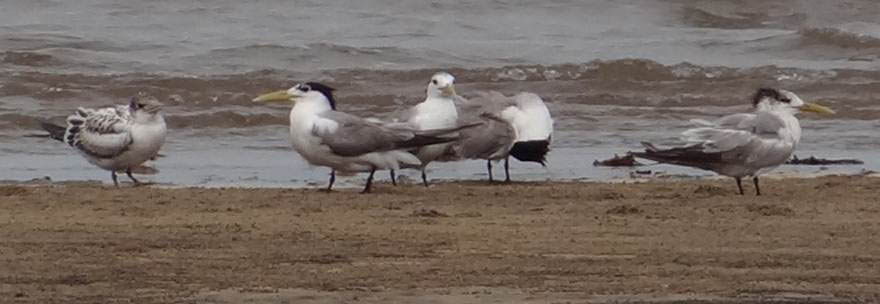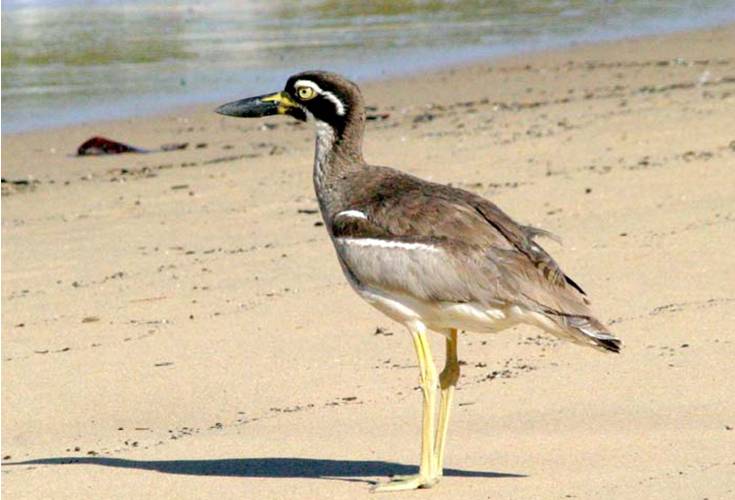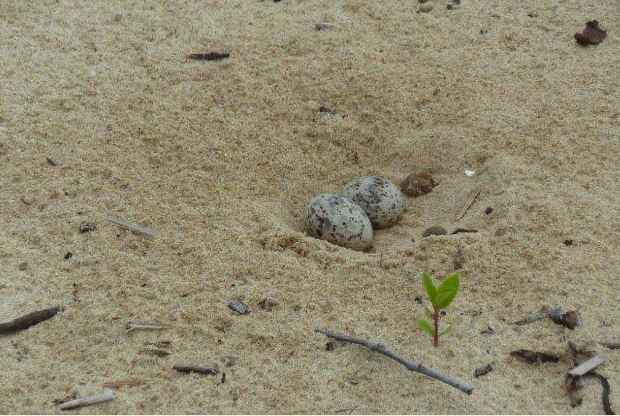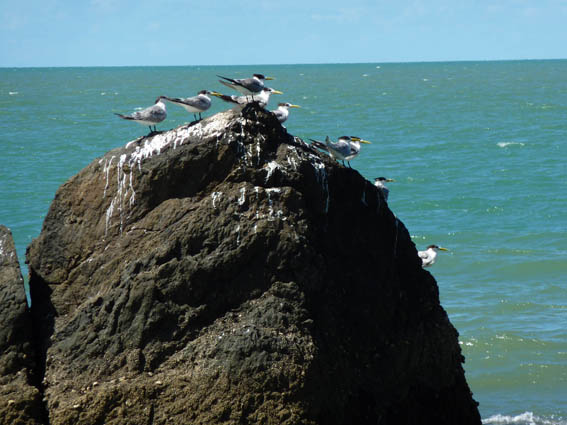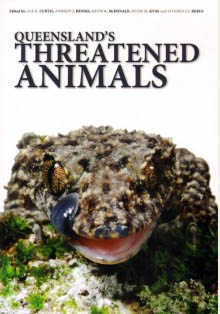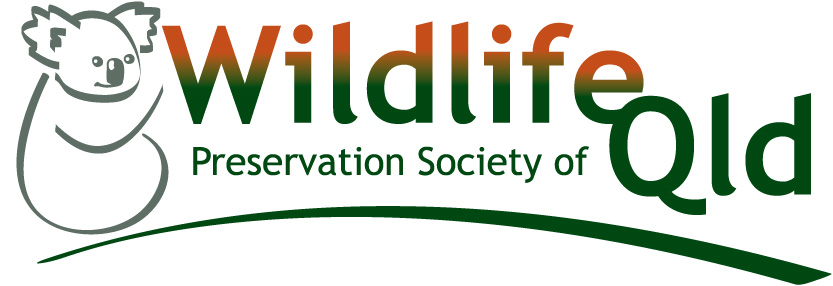| WILDWATCH: by ANNE WILKINSON. Wandering the Cassowary Coast beaches, bird watching is always a pleasure. It is a family rule always to carry a light pair of binoculars and, for me, a sketchbook. There are so many different kinds of birds for which the beach and the sea are focuses. |
| Some, like little terns and beach stone curlews are so rare it is often possible to come to know individuals. Even relatively common, often-seen varieties, like the crested terns in the pictures above and below by Coquette Point’s Yvonne Cunningham, can spark talking points. For example, the more heavily marked bird on the left (above) which looks most unlike a crested tern is in fact a juvenile, probably less than three months old. At first it was thought to be a different species. |
| A number of tern varieties haunt the coast, with the crested tern being almost the largest. Its wingspan is over a metre, and its length, including its tail, is some 46 centimetres, six centimetres longer than the page length of this newspaper (Tully Times). Only the Caspian tern is bigger. These birds were photographed at Coquette Point, but they can be seen on many local beaches. |
| Mostly, crested terns breed on the offshore islands. A tern rookery is a noisy affair, and it is noticeable that each sitting bird has judiciously placed itself just outside pecking distance from its neighbours, giving it about a metre around it. The nest is a scrape in the sand, often among beach plants, and usually a single egg is laid. Here, the breeding season extends roughly from March to June. |
Though water dominates their days, these elegant terns usually roost on the ground at night.
| The beautiful black crest, which can be raised, belongs to the breeding season. During the rest of the year it is often speckled with white. These variations are part of the reason why, when watching birds, it is so useful to carry a sketchbook or notebook. Especially if the bird is unfamiliar, it is all too easy to forget precise markings, size, shape or other details which will help with identification. |
| This also applies to other creatures, of course, like frogs, many of which have distinctive markings. Queensland’s Threatened Species is a brilliant book recently published by CSIRO documenting a massive 226 wildlife species which are seriously endangered or could soon disappear. Many of these creatures are so rare most people will not have heard of them before they disappear from the planet for ever. The really sad thing is that probably in many cases these extinctions could have been avoided as a major factor in most is destruction of habitat. Our region’s mahogany glider is a case in point with only a limited number of communities left, several of which are too small and too cut off from others to be considered viable for very much longer. |
